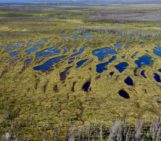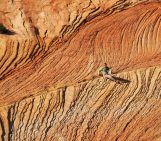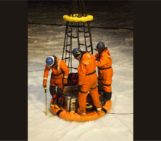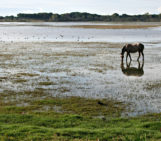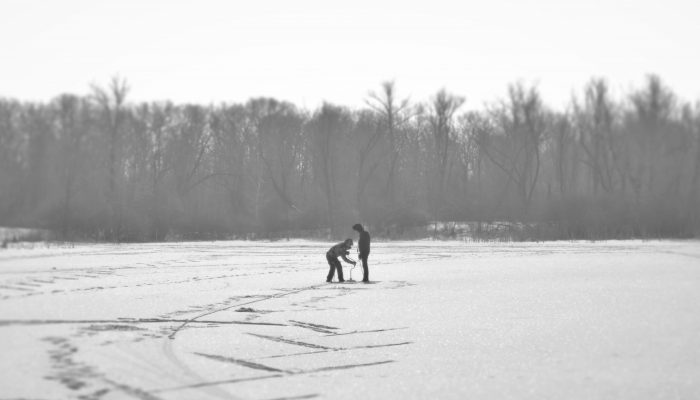
This week’s Imaggeo on Monday’s post, captured by Maksim Cherviakov, shows students from Saratov National Research University practicing a method to measure lake ice thickness. The students are using an ice auger to manually burrow through the ice. Afterwards, the ice depth is recorded using a tape measure.
“We measure ice thickness every year on the lakes located in the floodplain of the Volga river near Saratov. There are many number of ways to measure the thickness of ice but we use the easiest method. Students also measure air temperature, snow cover and structure of ice. The obtained data can give us information about the dynamics of changes in characteristics of lakes”, says Maksim
When is ice safe to stand on?
Many countries experience cold enough weather for frozen lakes and rivers to be used for recreational and professional activities. It is therefore essential to know the ice thickness and the associated weight limit restrictions. The US State of Minnesota, which experiences average winter temperatures of -9 to -16 degrees Celsius, published this guide (shown below) for people wanting to use its frozen waters. Ice must be at least 8-12 inches (20-30 cm) thick for cars to safely drive on.
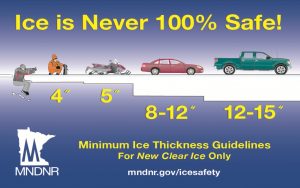
General ice thickness guidelines. Credit: Minnesota Department of Natural Resources.
Regular analysis of ice thickness, using manual methods like the one shown above or using more automated methods, can help avoid accidents. The video below shows what can happen when isn’t checked. Fortunately, in this instance, no injuries occurred. The Minnesota Department of Natural Resources recommend that vehicles should be parked at least 150 metres apart and moved every two hours to prevent sinking.
https://www.youtube.com/watch?v=jtojCrmdiZ8
Imaggeo is the EGU’s online open access geosciences image repository. All geoscientists (and others) can submit their photographs and videos to this repository and, since it is open access, these images can be used for free by scientists for their presentations or publications, by educators and the general public, and some images can even be used freely for commercial purposes. Photographers also retain full rights of use, as Imaggeo images are licensed and distributed by the EGU under a Creative Commons licence. Submit your photos at http://imaggeo.egu.eu/upload/.

